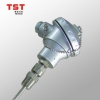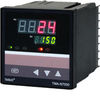- Voltage Regulators/Stabilizers[8]
- Refrigeration & Heat Exchange Parts[2]
- Current Meters[3]
- Sensors[4]
- Instrument Parts & Accessories[12]
- Power Cables[1]
- Relays[2]
- Inductors[1]
- Generators[1]
- Pipe Fittings[2]
- Generator Parts & Accessories[1]
- Temperature Instruments[10]
- Pressure Transmitters[2]
- Agricultural Greenhouses[1]
- Other Home Appliance Parts[4]
- Pressure Gauges[1]
- Counters[4]
- Timers[1]
- LED Displays[1]
- Moulds[2]
- Industrial Heater[3]
- Contact Person : Mr. Liu Hans
- Company Name : Ningbo Taisuo Technology Co., Ltd.
- Tel : 86-574-62505590
- Fax : 86-574-62506589
- Address : Zhejiang,Ningbo,#2 East Yuzhou Road, Yuyao,Ningbo,China
- Country/Region : China
- Zip : 315400
Sheathed type Pt100 rtd temperature sensor
Certain combinations of alloys have become popular as industry standards. Selection of the combination is driven by cost, availability, convenience, melting point, chemical properties, stability, and output. Different types are best suited for different applications. They are usually selected based on the temperature range and sensitivity needed. Thermocouples with low sensitivities (B, R, and S types) have correspondingly lower resolutions. Other selection criteria include the inertness of the thermocouple material, and whether it is magnetic or not. Standard thermocouple types are listed below with the positive first, followed by the negative electrode.
[] KType K (–) is the most common general purpose thermocouple with a sensitivity of approximately 41 µV/°C, chromel positive relative to alumel. It is inexpensive, and a wide variety of probes are available in its −200 °C to +1350 °C range. Type K was specified at a time when was less advanced than it is today, and consequently characteristics vary considerably between samples. One of the constituent metals, , is magnetic; a characteristic of thermocouples made with magnetic material is that they undergo a step change in output when the magnetic material reaches its Curie point (around 354 °C for type K thermocouples).
[] EType E (–) has a high output (68 µV/°C) which makes it well suited to cryogenic use. Additionally, it is non-magnetic.
[] JType J (–) has a more restricted range than type K (−40 to +750 °C), but higher sensitivity of about 55 µV/°C. The Curie point of the iron (770 °C) causes an abrupt change in the characteristic, which determines the upper temperature limit....
[] NType N (–) (Nickel-Chromium-Silicon/Nickel-Silicon) thermocouples are suitable for use at high temperatures, exceeding 1200 °C, due to their stability and ability to resist high temperature oxidation. Sensitivity is about 39 µV/°C at 900 °C, slightly lower than type K. Designed to be an improved type K, it is becoming more popular.
[] Platinum types B, R, and STypes B, R, and S thermocouples use or a platinum– alloy for each conductor. These are among the most stable thermocouples, but have lower sensitivity than other types, approximately 10 µV/°C. Type B, R, and S thermocouples are usually used only for high temperature measurements due to their high cost and low sensitivity.
BType B thermocouples use a platinum–rhodium alloy for each conductor. One conductor contains 30% rhodium while the other conductor contains 6% rhodium. These thermocouples are suited for use at up to 1800 °C. Type B thermocouples produce the same output at 0 °C and 42 °C, limiting their use below about 50 °C.
RType R thermocouples use a platinum–rhodium alloy containing 13% rhodium for one conductor and pure platinum for the other conductor. Type R thermocouples are used up to 1600 °C.
SType S thermocouples are constructed using one wire of 90% Platinum and 10% Rhodium (the positive or "+" wire) and a second wire of 100% platinum (the negative or "-" wire). Like type R, type S thermocouples are used up to 1600 °C. In particular, type S is used as the standard of calibration for the melting point of (1064.43 °C).
[] TType T (–) thermocouples are suited for measurements in the −200 to 350 °C range. Often used as a differential measurement since only copper wire touches the probes. Since both conductors are non-magnetic, there is no Curie point and thus no abrupt change in characteristics. Type T thermocouples have a sensitivity of about 43 µV/°C.
Sheathed type Pt100 rtd temperature sensor










